Abstract
The immunological response of mice submitted to hydantoin treatment was determined. Hydantoin reduced the absolute number of spleen cells in treated animals and did not modify spleen cells reactivity to concanavalin A, although the response to SRBC challenge, as measured by the Jerne plaque-forming cell technique, was significantly decreased. Following these findings, the influence of hydantoin on carcinogenesis was evaluated by using the model of urethane-induced lung adenomas in SWR mice. Treatment with hydantoin significantly reduced the incidence of the induced adenomas. We confirmed that hydantoin modifies the immune response of the host mainly by depressing its humoral function and we have shown that this effect was associated with an inhibitory effect on tumour induction.
Full text
PDF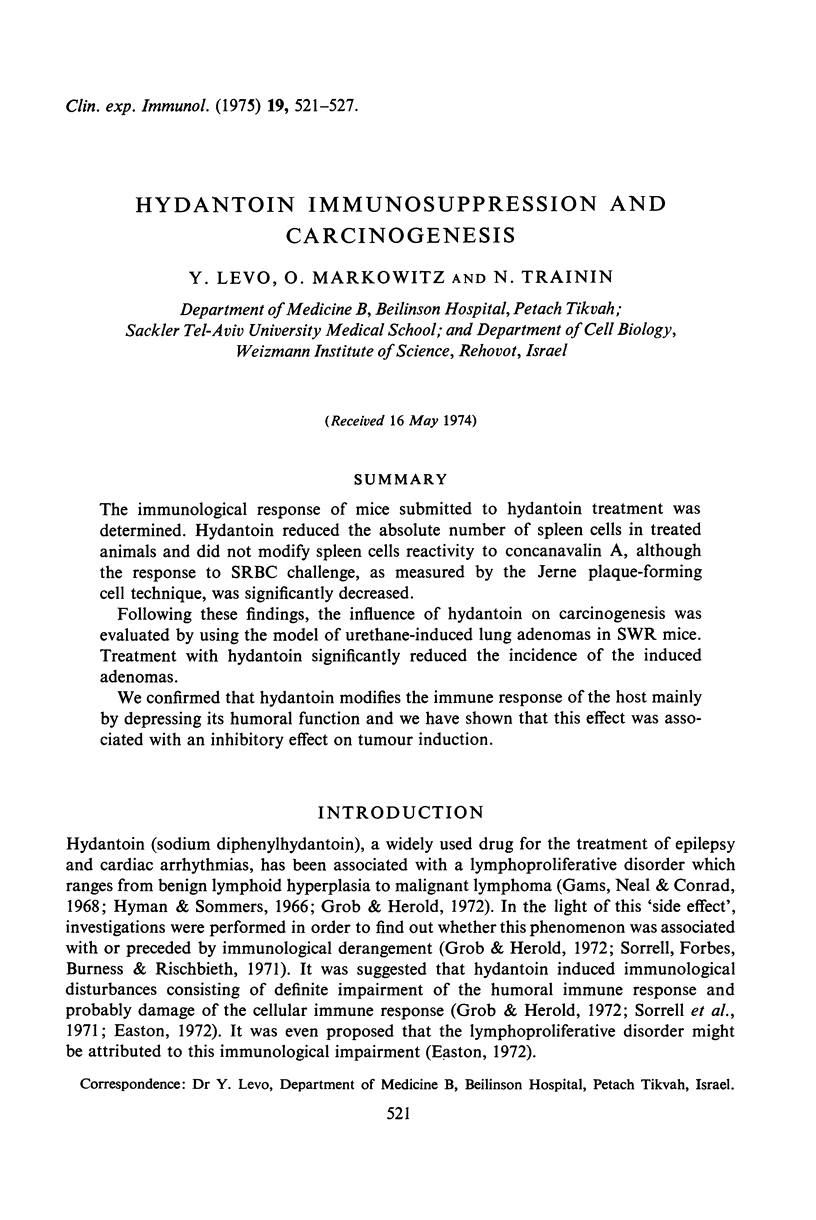
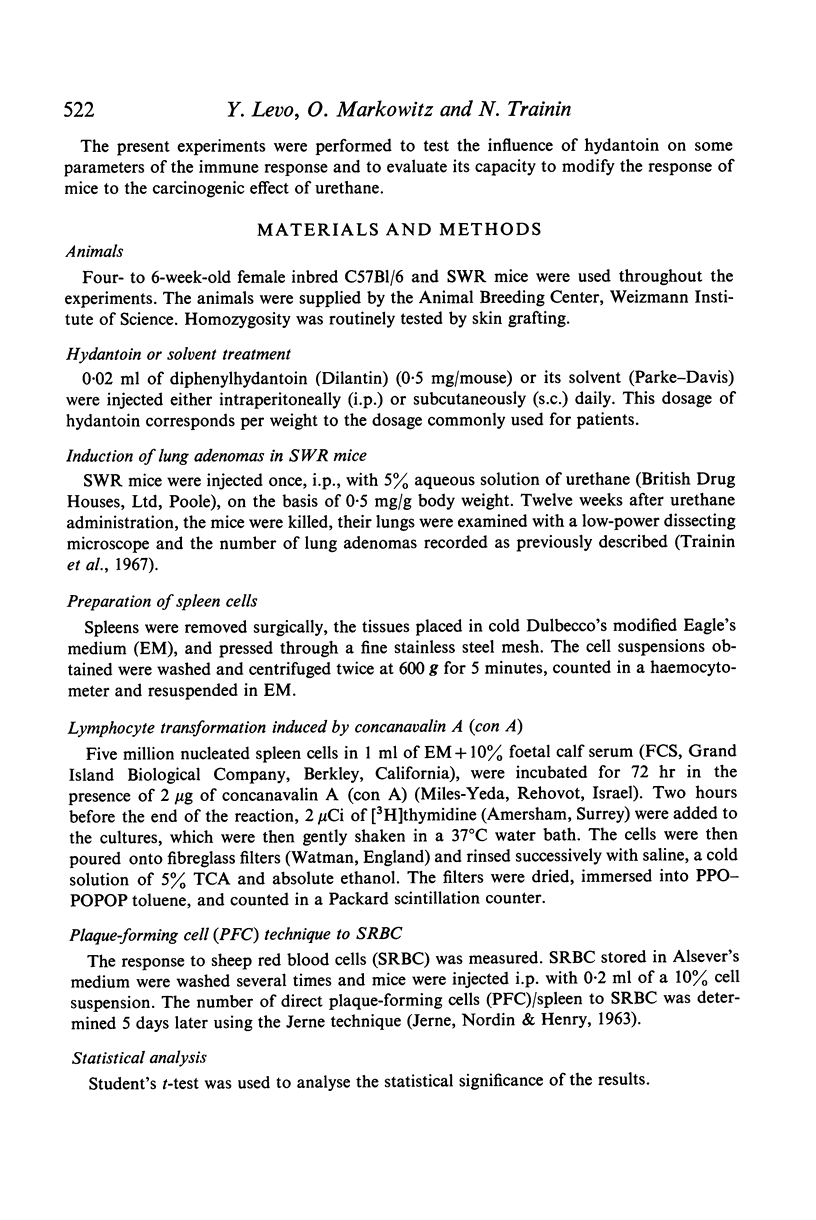
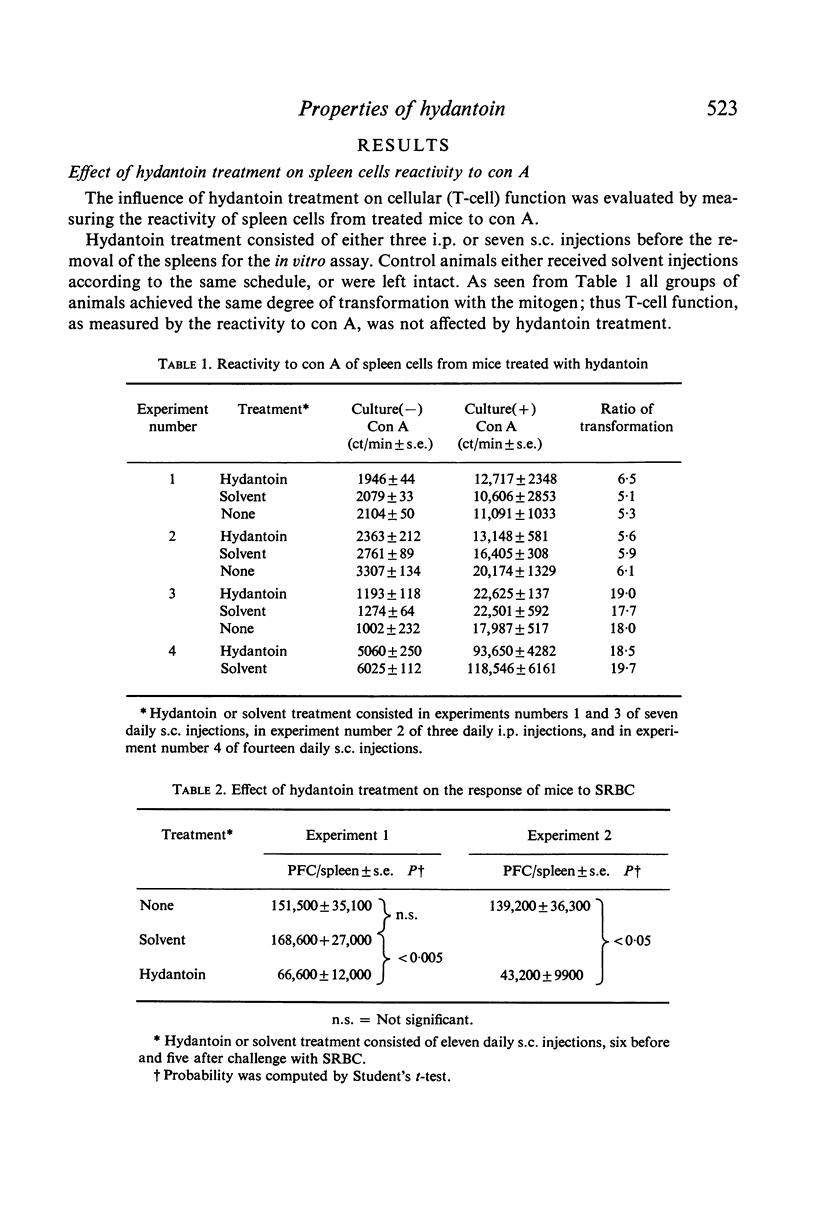
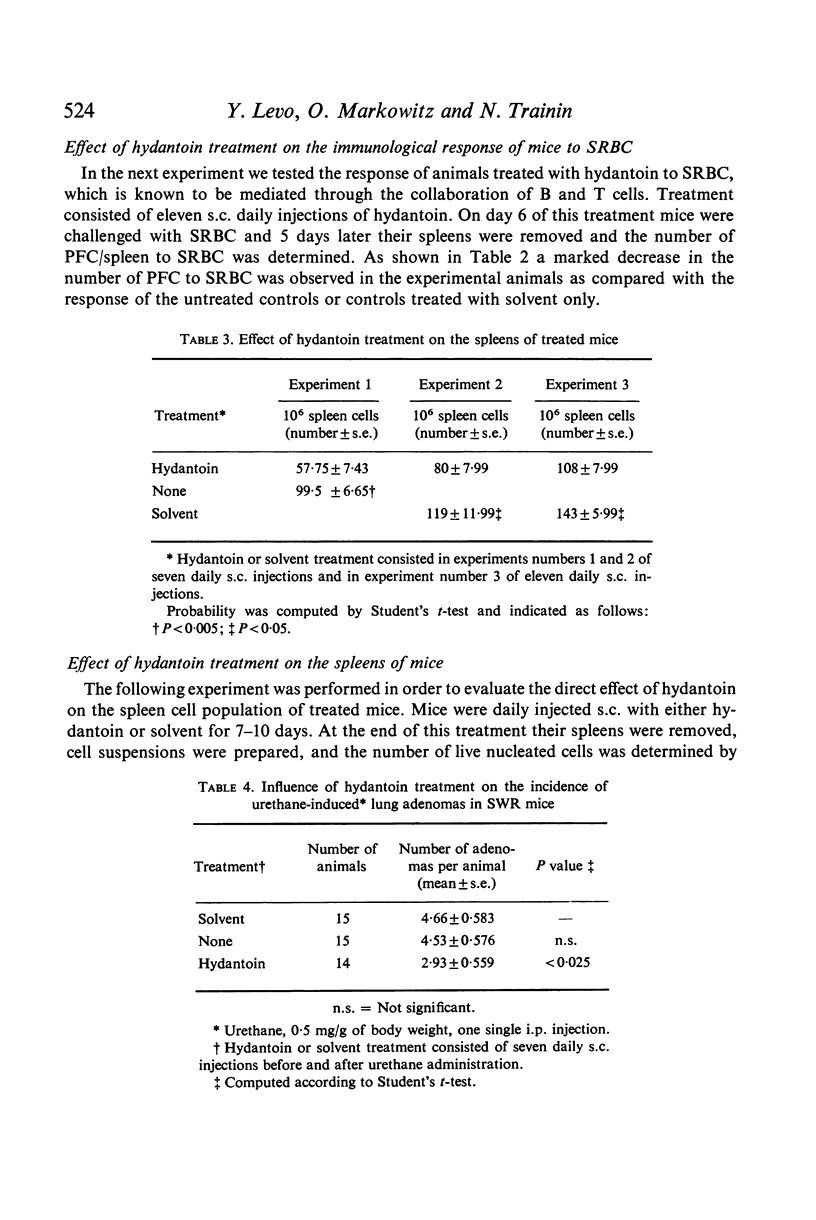
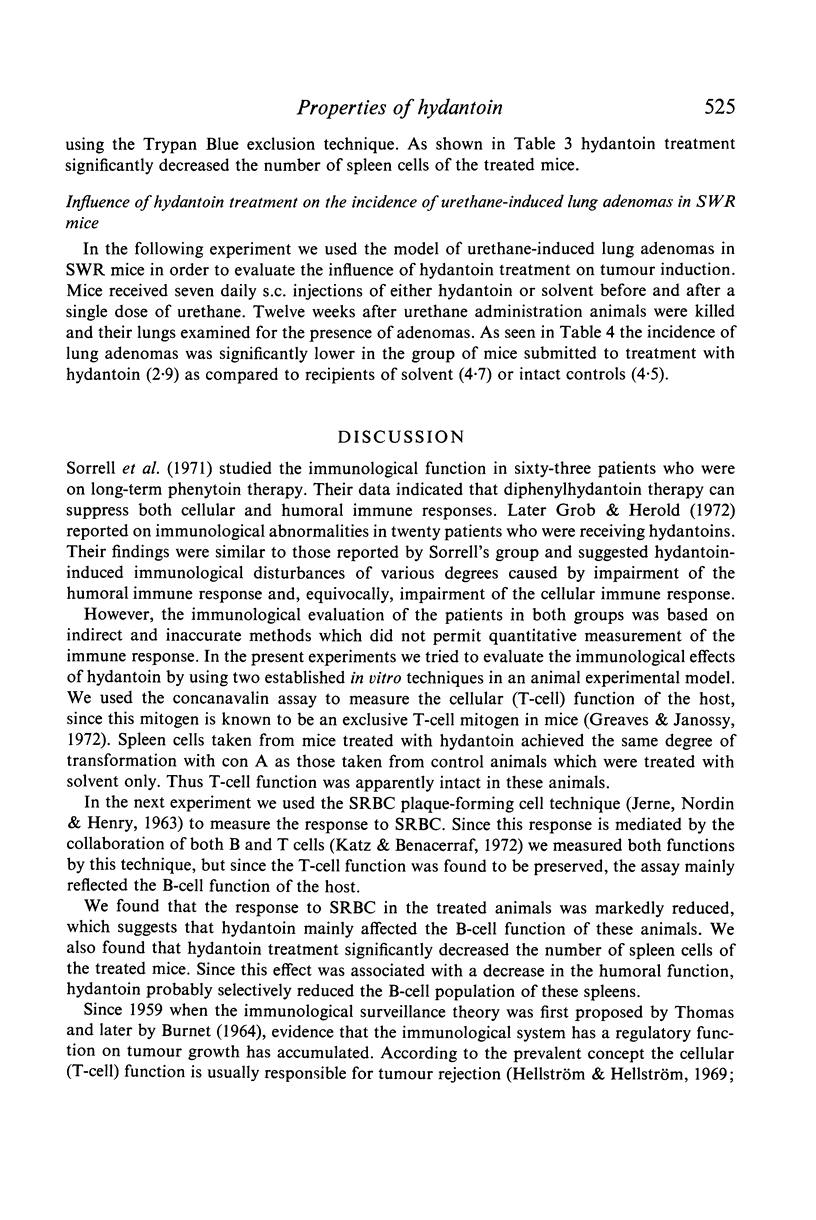
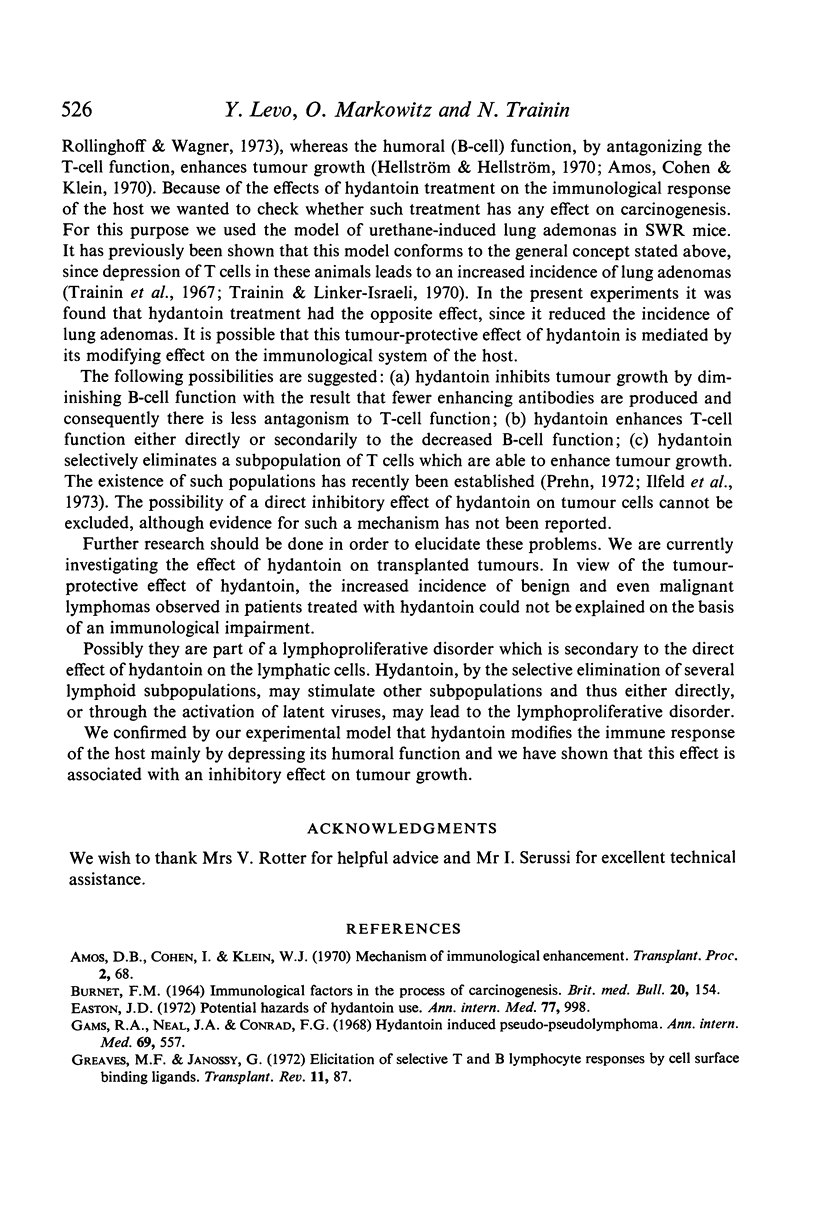
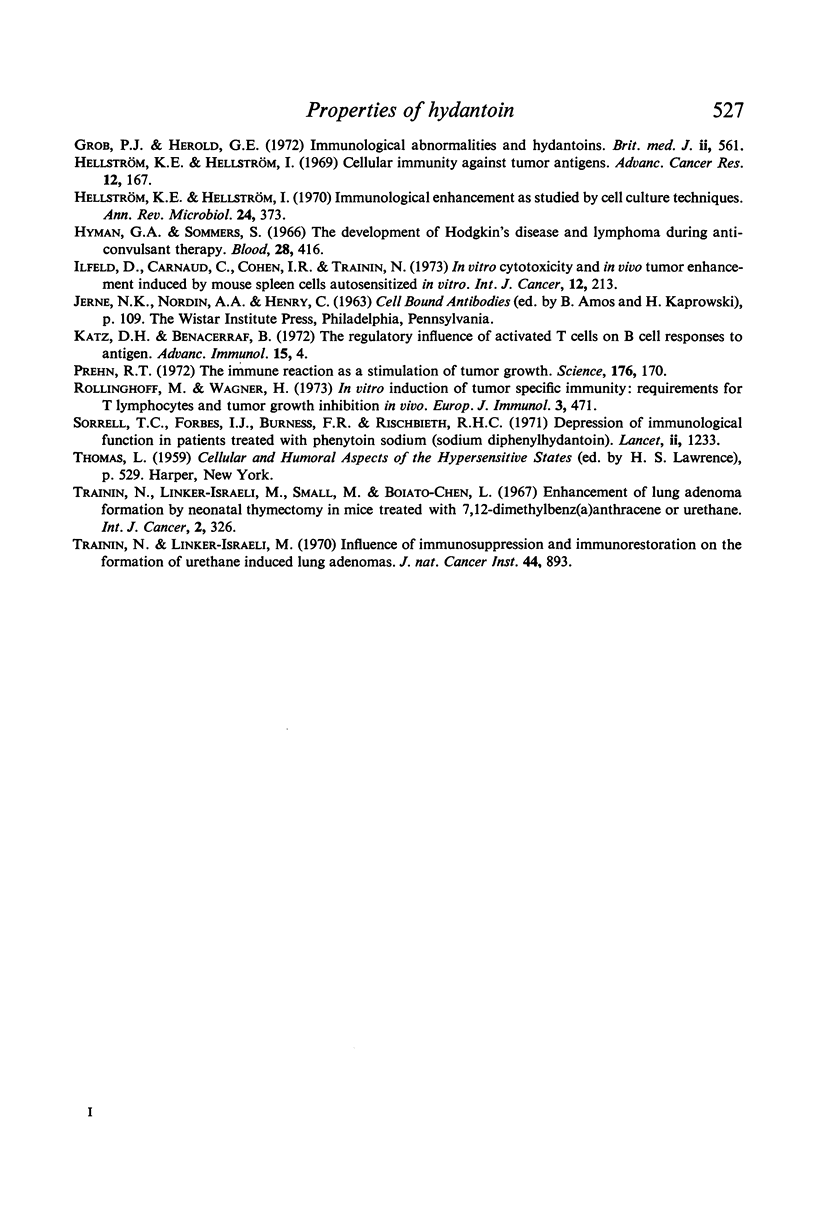
Selected References
These references are in PubMed. This may not be the complete list of references from this article.
- Amos D. B., Cohen I., Klein W. J., Jr Mechanisms of immunologic enhancement. Transplant Proc. 1970 Mar;2(1):68–75. [PubMed] [Google Scholar]
- BURNET M. IMMUNOLOGICAL FACTORS IN THE PROCESS OF CARCINOGENESIS. Br Med Bull. 1964 May;20:154–158. doi: 10.1093/oxfordjournals.bmb.a070310. [DOI] [PubMed] [Google Scholar]
- Easton J. D. Potential hazards of hydantoin use. Ann Intern Med. 1972 Dec;77(6):998–999. doi: 10.7326/0003-4819-77-6-998. [DOI] [PubMed] [Google Scholar]
- Gams R. A., Neal J. A., Conrad F. G. Hydantoin-induced pseudo-pseudolymphoma. Ann Intern Med. 1968 Sep;69(3):557–568. doi: 10.7326/0003-4819-69-3-557. [DOI] [PubMed] [Google Scholar]
- Greaves M., Janossy G. Elicitation of selective T and B lymphocyte responses by cell surface binding ligands. Transplant Rev. 1972;11:87–130. doi: 10.1111/j.1600-065x.1972.tb00047.x. [DOI] [PubMed] [Google Scholar]
- Grob P. J., Herold G. E. Immunological abnormalities and hydantoins. Br Med J. 1972 Jun 3;2(5813):561–563. doi: 10.1136/bmj.2.5813.561. [DOI] [PMC free article] [PubMed] [Google Scholar]
- Hellström K. E., Hellström I. Cellular immunity against tumor antigens. Adv Cancer Res. 1969;12:167–223. doi: 10.1016/s0065-230x(08)60331-0. [DOI] [PubMed] [Google Scholar]
- Hellström K. E., Hellström I. Immunological enhancement as studied by cell culture techniques. Annu Rev Microbiol. 1970;24:373–398. doi: 10.1146/annurev.mi.24.100170.002105. [DOI] [PubMed] [Google Scholar]
- Hyman G. A., Sommers S. C. The development of Hodgkin's disease and lymphoma during anticonvulsant therapy. Blood. 1966 Sep;28(3):416–427. [PubMed] [Google Scholar]
- Ilfeld D., Carnaud C., Cohen I. R., Trainin N. In vitro cytotoxicity and in vivo tumor enhancement induced by mouse spleen cells autosensitized in vitro. Int J Cancer. 1973 Jul 15;12(1):213–222. doi: 10.1002/ijc.2910120122. [DOI] [PubMed] [Google Scholar]
- Prehn R. T. The immune reaction as a stimulator of tumor growth. Science. 1972 Apr 14;176(4031):170–171. doi: 10.1126/science.176.4031.170. [DOI] [PubMed] [Google Scholar]
- Röllinghoff M., Wagner H. In vitro induction of tumor specific immunity: requirements for T lymphocytes and tumor growth inhibition in vivo. Eur J Immunol. 1973 Aug;3(8):471–476. doi: 10.1002/eji.1830030804. [DOI] [PubMed] [Google Scholar]
- Sorrell T. C., Forbes I. J., Burness F. R., Rischbieth R. H. Depression of immunological function in patients treated with phenytoin sodium (sodium diphenylhydantoin). Lancet. 1971 Dec 4;2(7736):1233–1235. doi: 10.1016/s0140-6736(71)90547-2. [DOI] [PubMed] [Google Scholar]
- Trainin N., Linker-Israeli M. Influence of immunosuppression and immunorestoration on the formation of urethan-induced lung adenomas. J Natl Cancer Inst. 1970 Apr;44(4):893–900. [PubMed] [Google Scholar]
- Trainin N., Linker-Israeli M., Small M., Boiato-Chen L. Enhancement of lung adenoma formation by neonatal thymectomy in mice treated with 7,12-dimethylbenz(a)anthracene or urethan. Int J Cancer. 1967 Jul 15;2(4):326–336. doi: 10.1002/ijc.2910020407. [DOI] [PubMed] [Google Scholar]


